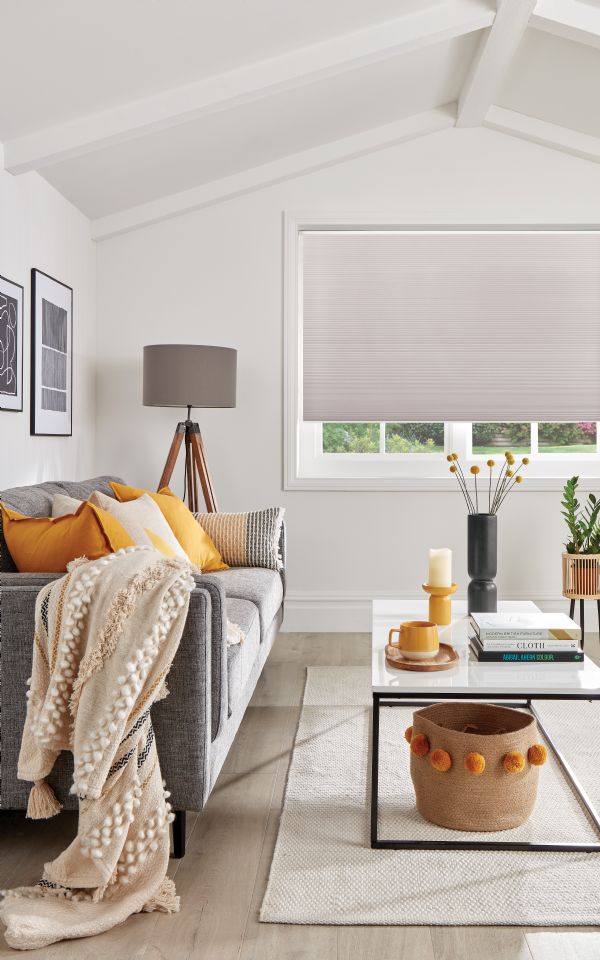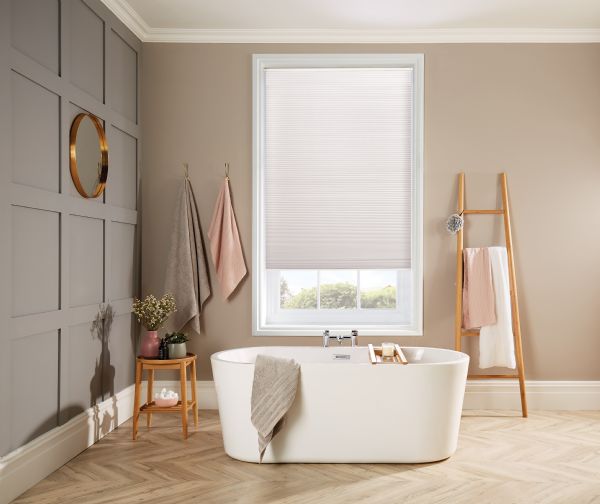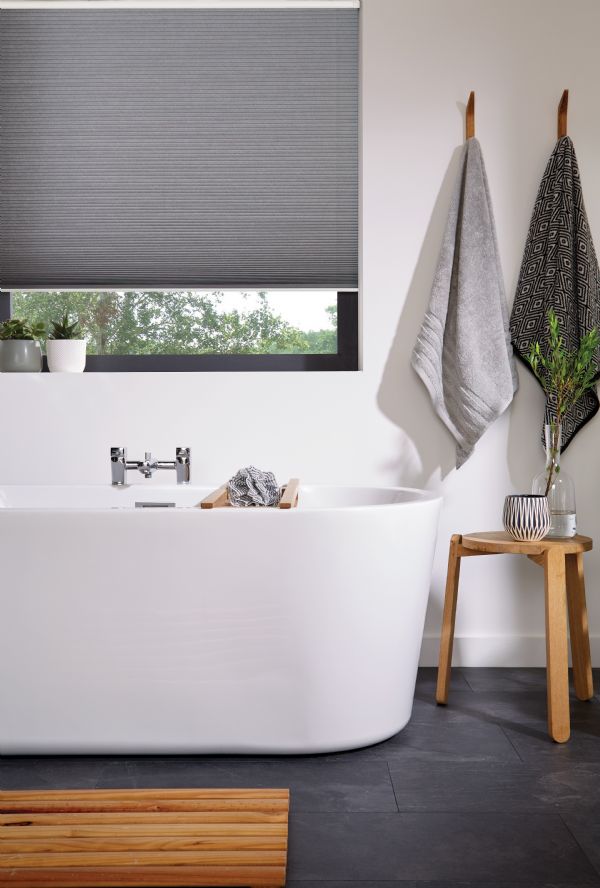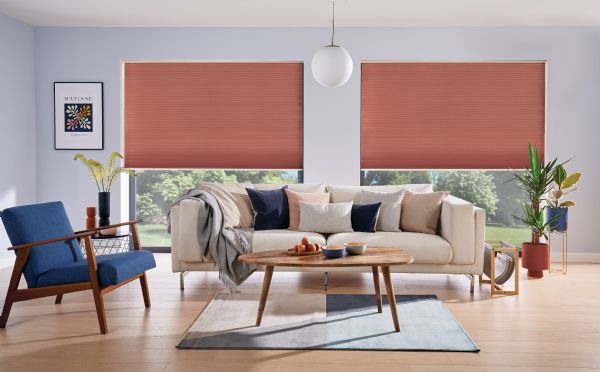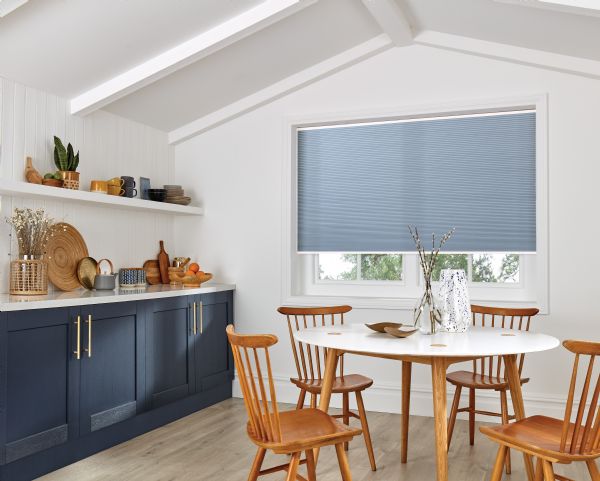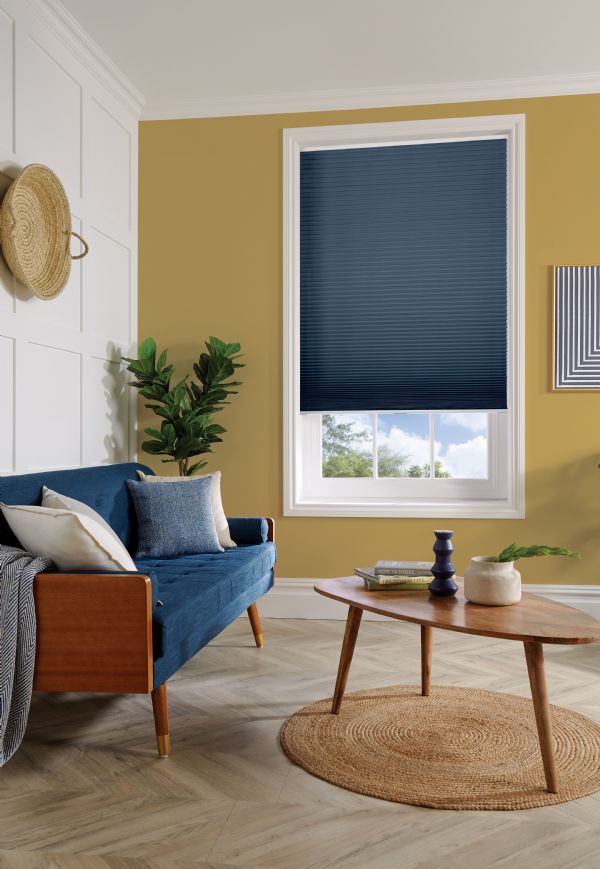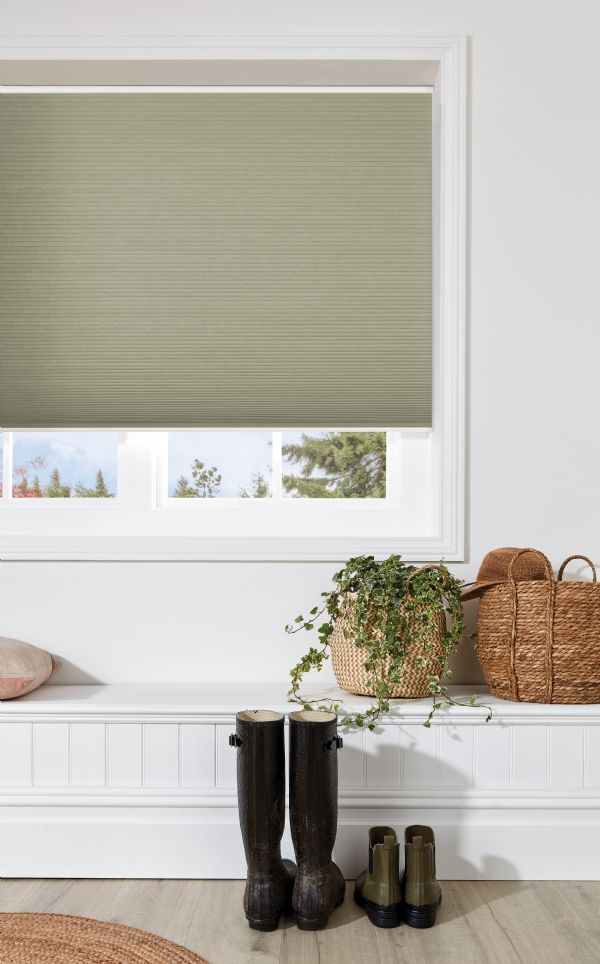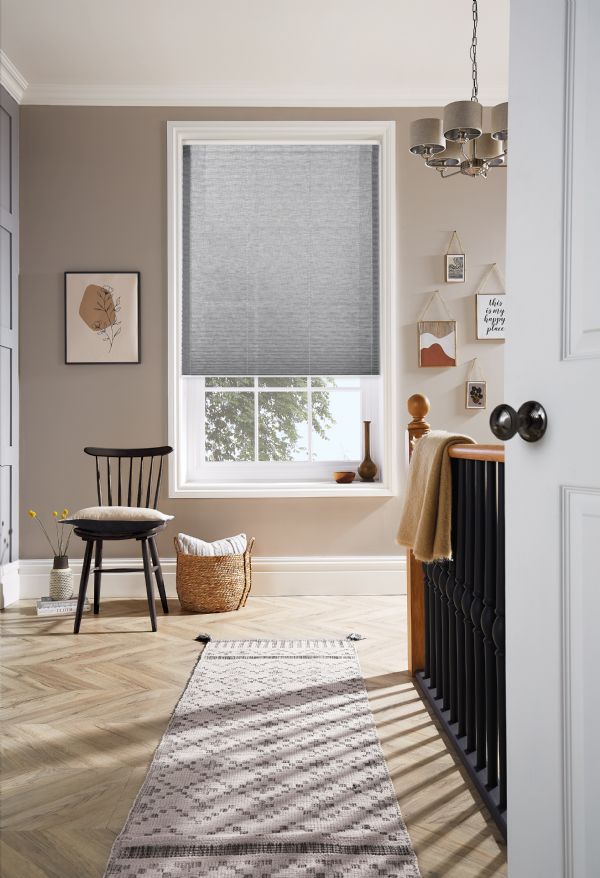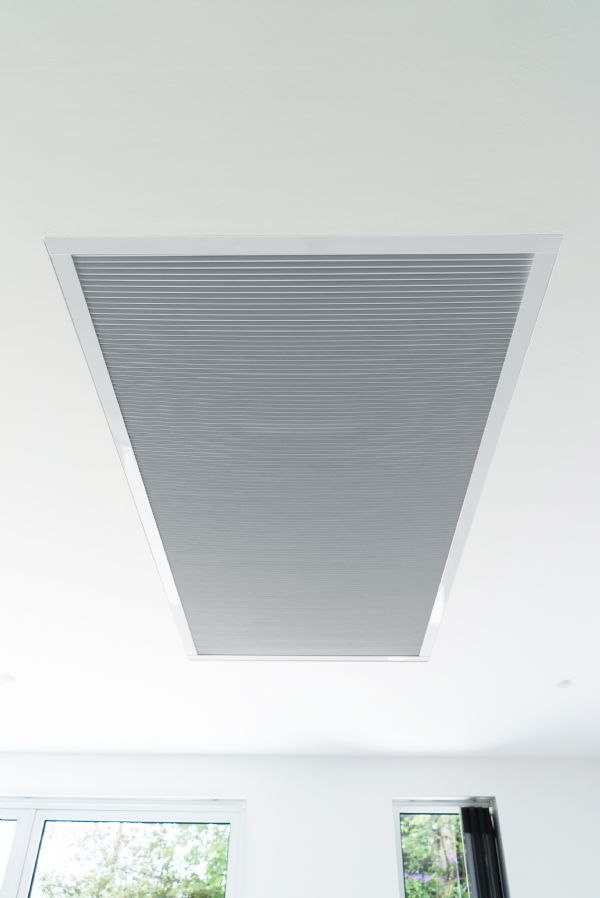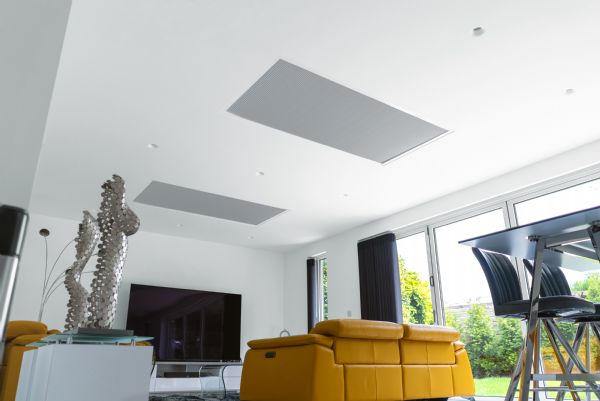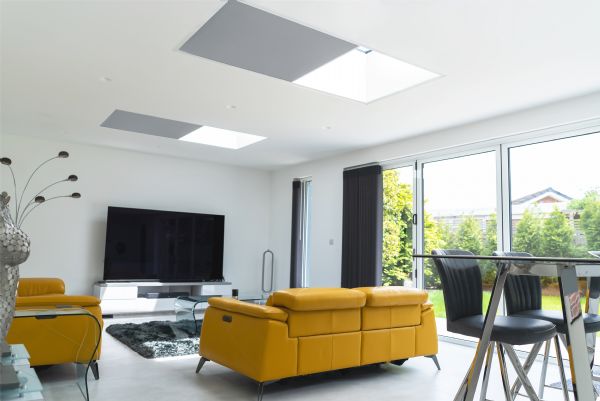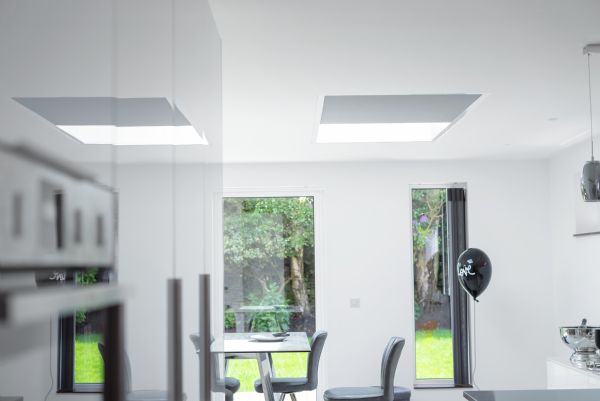TENSIONED, FREEHANGING AND ROOF PLEATED BLINDS - WHAT ARE THEY?
Pleated blinds are a lightweight fabric that’s stiffened and folds together in a concertina effect. You’re most likely to see them in the roof of a conservatory or across a lantern roof window.
Pleated honeycomb material is highly thermally efficient, effectively retaining or blocking heat.
The structure of pleated material enables it to be supported with tension wires, which is more challenging to achieve with other types of blinds. Consequently, you’ll frequently find them in the roof area, unlike, for example, roller blinds.
Pleated blinds can be installed in various ways to a window, which explains the different types of pleated blinds available.
Tensioned Pleated
A tensioned pleated blind is quite similar to a Perfect Fit Pleated blind, except it lacks a frame. You can raise and lower the pleated blind manually, and once you leave it in that position, it stays there.
In contrast, Perfect Fit pleated blinds are specifically fitted to each panel of glass. A tensioned pleated blind, on the other hand, would be fitted across the entire window as a single blind.
Freehanging Pleated
A freehanging pleated blind is a type of blind that has a cord or chain attached to it, which is used to raise and lower the blind. These blinds are usually installed in areas where it’s difficult to raise and lower a blind manually, or perhaps the window is simply too tall to reach the top and lift the blind.
Roof Pleated
A roof pleated blind is a tensioned pleated blind that is affixed with support wires and is designed to cover roof glass.
Pleated blinds can be shaped
Pleated blinds are the only viable option for creating blinds that assume a specific shape, like a triangle. An apex above a door area essentially consists of two triangular shapes, joined together. Pleated blinds are the only suitable choice for covering these glass panels.
WHERE ARE PLEATED BLINDS TYPICALLY FITTED?
Perfect Fit Pleated blinds are a common type, while other pleated blind options are less so and are usually application-specific.
For instance, we might use a free-hanging pleated blind made of material A across a kitchen sink, as it’s easier to pull up and down compared to, say, Perfect Fit pleated blinds in material A on the kitchen doors. All of these are pleated blinds, but they’re fitted and used in different ways.
We can also use pleated blinds to achieve a better blackout effect than roller blinds (see our Blackout Blinds product page).
Functionality of Pleated Blinds
Daytime Privacy
Pleated blinds are either completely up or down, making them unsuitable for filtering the view into your room during daylight hours.
Protect items against fading
With the blinds shut, your furniture will be protected from fading. However, this means covering your window during daylight hours. If this is a crucial requirement, you might want to consider alternative options.
Glare from the sun
The sun’s glare is usually confined to the upper part of any window, depending on the sun’s height. This allows you to cover the required area without completely closing off the window. These can be positioned anywhere to prevent harsh glare.
Nightime Privacy
These can be fully closed for night.
Thermal Gain (Heat)
Pleated blinds, depending on how they’re installed, can be highly effective blinds in reducing heat buildup in your home.
Thermal Loss (Heat loss from inside your house)
Pleated blinds can significantly reduce heat loss, depending on how they are installed. Our Perfect Fit Pleated blinds are the most efficient type of pleated blind we manufacture.
Blackout effect for bedrooms
Pleated blinds offer an excellent blackout effect. For a comprehensive understanding of your options for blackout blinds, visit our Blackout Blinds product page.
WHY ARE PLEATED BLINDS SO THERMALLY EFFICIENT
Pleated cellular material, commonly known as honeycomb, consists of two layers of material bonded together to create an air pocket between them. This air pocket effectively reduces the transfer of heat and cold between the layers. In the case of blackout cellular pleated fabrics, there are multiple layers of material, including layers of foil. This is the reason behind their exceptional ability to retain heat and allow for efficient ventilation.
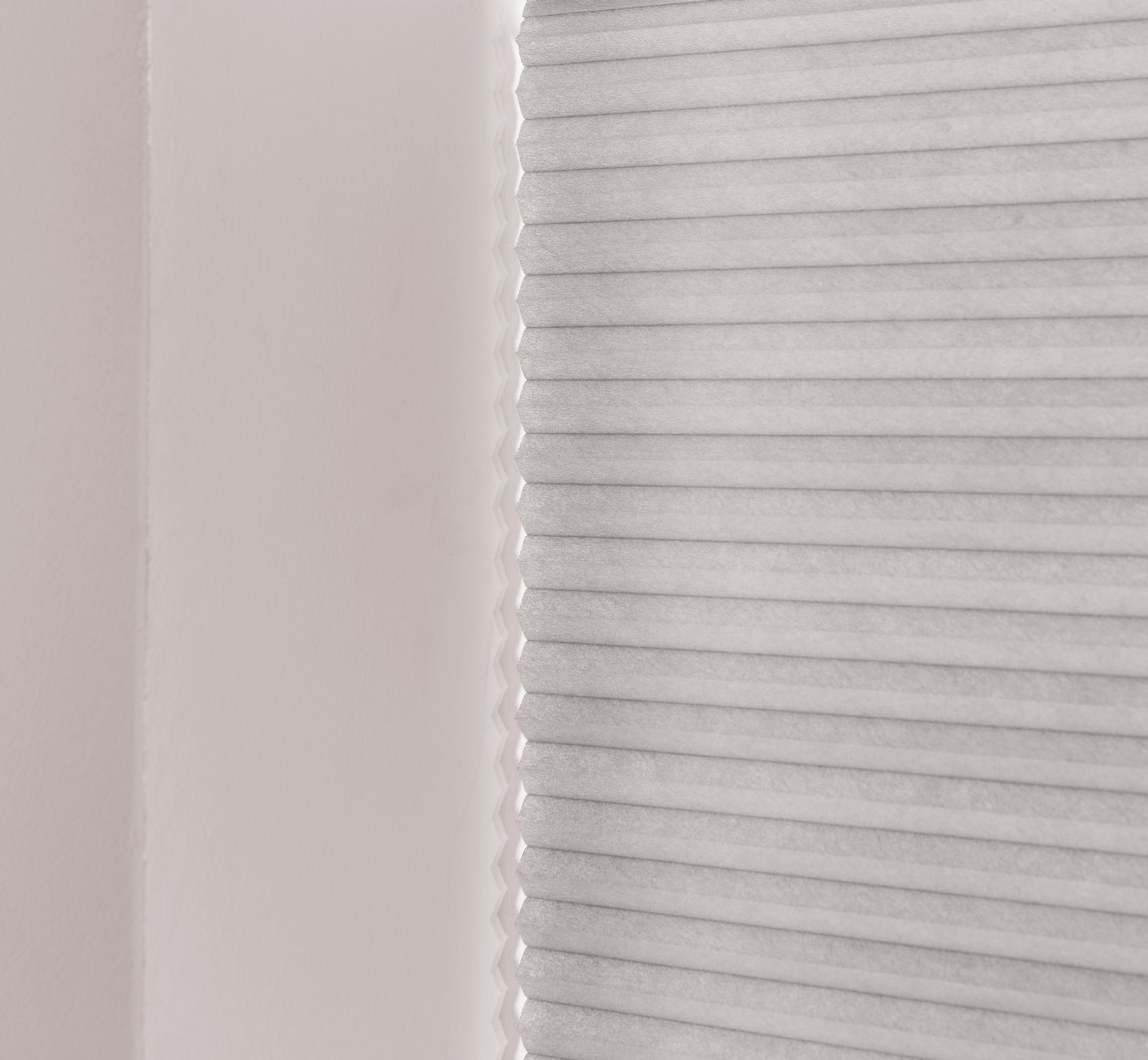
ROOF PLEATED BLINDS ACROSS LANTERN WINDOWS AND IN A CONSERVATORY ROOF
Pleated blinds installed in a roof area are incredibly thermally efficient in keeping heat out of the roof. As a practical company, we have several important things to say about roof pleated blinds.
During the summer months, many customers forget how high up in the sky the sun is. The majority of heat buildup in a room during summer comes from the glass in your roof area.
With roof pleated blinds, you have two options for materials: blackout or non-blackout. Blackout materials are the most effective, but they severely restrict light from the roof. Non-blackout materials allow light to enter the room but are slightly less effective.
Roof blinds are typically operated using a pole that you latch onto a handle and manually pull the blind backward and forward.
Motorisation options are also available. If you are thinking of motorising your roof pleated blinds, please read our Motorisation page for all the pros and cons.
WARRANTY & REPAIRS
Pleated blinds tend to suffer significant wear and tear over their lifespan. While a long warranty is important, it’s not as crucial as the availability of effective repair services.
Regardless of where you source your pleated blind, make sure you have a clear understanding of the repair services offered by the supplier.
MOTORISATION OPTIONS
Pleated blinds can be motorised, subject to certain width restrictions. See our Motorisation page for more information on motorisation of pleated blinds in general.
RESTRICTIONS
All pleated blinds, regardless of their type, are subject to various restrictions regarding their width and drop. As a manufacturer, we frequently have the ability to produce blinds that exceed the dimension limitations imposed by other companies.
